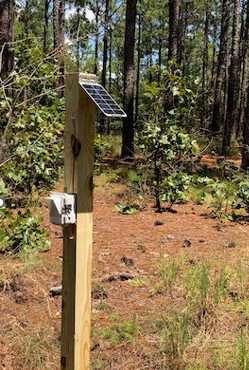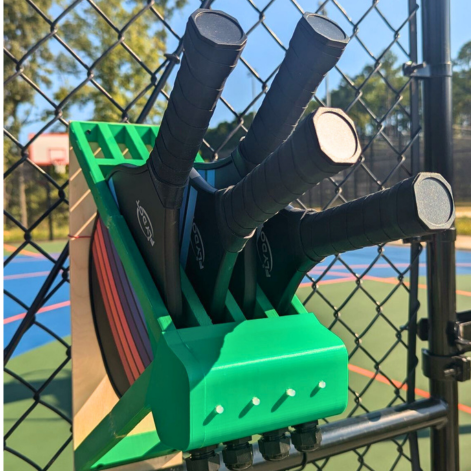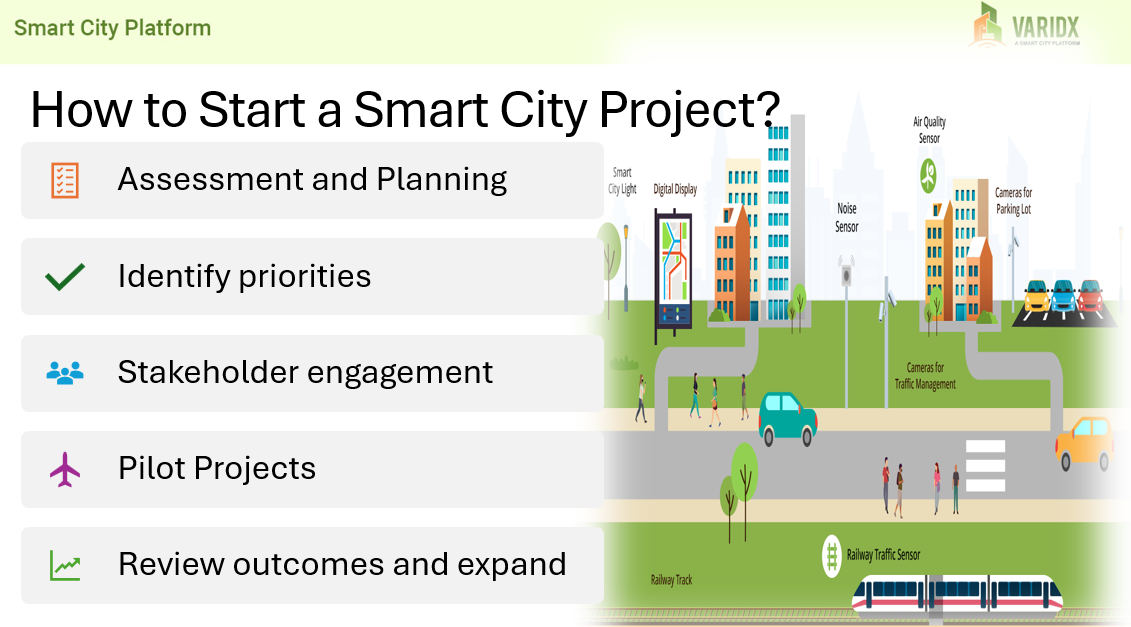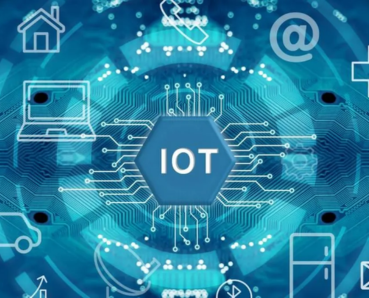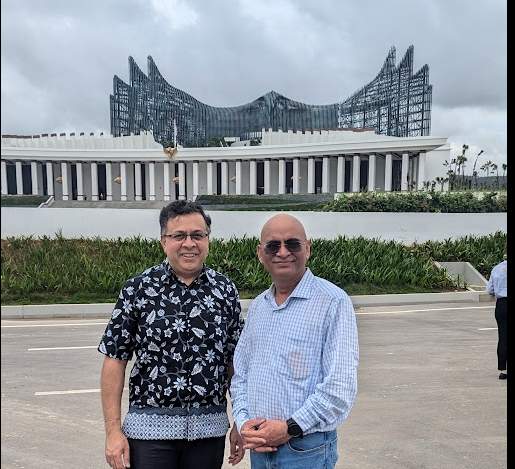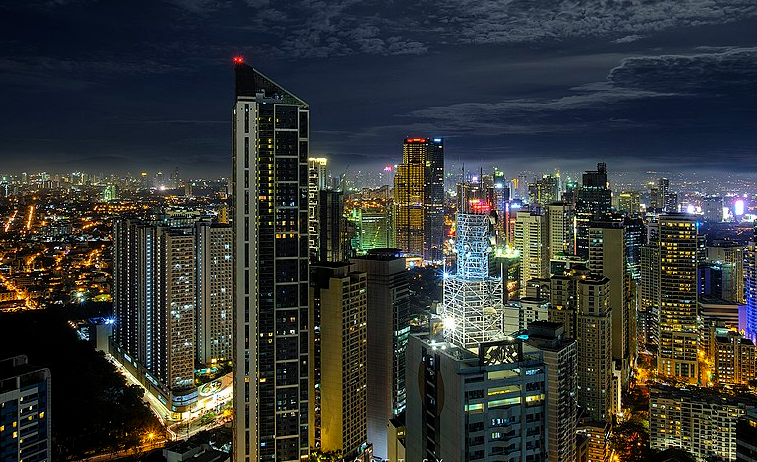Smart cities are more than just interconnected devices; they are living, breathing ecosystems designed to improve the quality of life for their citizens. And at the heart of any thriving city lies its transportation network. Smart transportation systems are revolutionizing urban mobility, making it safer, more efficient, and more sustainable. This includes not only personal vehicles but also mass transit systems that serve a vital role in urban centers.
Why Smart Transportation Matters
- Reduced Congestion: Traffic jams are a major source of frustration and lost productivity. Smart traffic management systems, powered by real-time data from IoT sensors and cameras, can dynamically adjust traffic flow, optimize routes, and reduce congestion.
- Enhanced Safety: Smart transportation incorporates advanced safety features such as connected vehicle technology, which allows vehicles to communicate with each other and with infrastructure to prevent accidents. Predictive maintenance systems can also identify potential safety hazards before they lead to breakdowns or accidents.
- Improved Sustainability: Electric vehicles, optimized routing, and reduced idling contribute to lower emissions and a smaller carbon footprint. Smart transportation systems can also promote the use of public transportation and shared mobility options, further reducing reliance on personal vehicles.
- Increased Efficiency: Real-time information on traffic conditions, public transportation schedules, and parking availability empowers citizens to make informed decisions about their travel plans, saving time and reducing stress.
Bus Stop Queue [Freepik www.freepik.com]
Key Components of Smart Transportation
- IoT Sensors: These devices collect data on traffic flow, parking occupancy, air quality, and other key metrics, providing a comprehensive picture of the urban environment.
- Smart Traffic Management Systems: These systems use data analytics and algorithms to optimize traffic signal timing, manage incidents, and provide real-time traffic information to drivers.
- Connected Vehicles: Vehicles equipped with sensors and communication technology can exchange information with each other and with infrastructure, enabling features such as adaptive cruise control, lane departure warning, and automatic emergency braking.
- Electric Vehicle Infrastructure: A network of charging stations is essential to support the widespread adoption of electric vehicles. Smart charging systems can optimize charging schedules to minimize grid impact and reduce energy costs.
- E-Governance Platforms: Citizens can use mobile apps and online portals to access transportation information, pay for parking, report issues, and provide feedback to city officials.
Mass Transit Integration
Mass transit is a critical component of smart transportation, offering high-capacity, efficient, and sustainable mobility options within urban areas. Integrating mass transit into a smart city framework involves several key strategies:
- Real-Time Information Systems: Providing passengers with real-time information on bus and train arrival and departure times, potential delays, and service disruptions enhances the overall transit experience. Digital displays at bus stops and mobile apps can deliver this information directly to riders.
- Integrated Payment Systems: Smart fare payment systems, such as mobile ticketing and contactless payment options, streamline the boarding process and improve efficiency.
- Optimized Routing and Scheduling: Data analytics and AI algorithms can be used to optimize bus and train routes and schedules based on passenger demand and traffic conditions. This ensures that transit services are aligned with the needs of the community and are operating at peak efficiency.
Enhancing Public Safety at Mass Transit Stops
Ensuring the safety and security of passengers at mass transit stops is paramount. Several smart city technologies can be deployed to enhance public safety:
- Smart Lighting: Adequate lighting is essential for creating a safe and secure environment at bus stops and transit stations. Smart LED lights can be equipped with sensors that automatically adjust brightness based on ambient light levels and pedestrian activity, improving visibility and deterring crime.
- Surveillance Systems: Security cameras can be strategically placed at transit stops to monitor activity and deter criminal behavior. Real-time video feeds can be monitored by transit authorities and law enforcement, allowing for rapid response to incidents.
- Emergency Communication Systems: Installing emergency call boxes or buttons at transit stops provides passengers with a direct line to transit authorities or emergency services. These systems can be particularly valuable in isolated or high-crime areas.
- Protective Barriers: Metro in Los Angeles has finalized the installation of protective barriers on its entire bus fleet to protect drivers from physical attacks. These barriers, made of shatterproof, tempered glass, have been shown to reduce assaults on bus operators by 58%.
Examples in Action
- GoTriangle (North Carolina): GoTriangle uses a Rider App to allow passengers to track buses in real time and provides service alerts via its website and social media channels. The agency also has an adverse weather plan to maintain the well-being of riders and employees during inclement weather.
- Los Angeles Metro: Metro has equipped its entire bus fleet with protective barriers for drivers to reduce assaults. The agency has also added onboard cameras, digital video recorders, and emergency buttons that operators can use to call for help.
- Miami-Dade Transit: Miami-Dade Transit integrates various smart technologies to improve public transport.
- SELS: Smart Era Lighting has been designing and building smart, solar powered LED lights and bus stops. Agencies around the US are using these to provide an illuminated location for passengers.
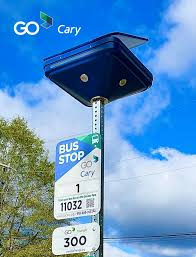
The Road Ahead
Smart transportation is not just about technology; it’s about creating a more livable, sustainable, and equitable future for our cities. By embracing innovation and working together, we can transform our transportation networks, including mass transit systems, into engines of economic growth and social progress. The Smart Transport Symposium, and similar events, are crucial for fostering these discussions and driving innovation forward.
Smart Mobility Symposium
📅 Date: April 17, 2025
⏰ Time: 3-5 PM
📍 Location: Central Pines Regional Council, 4307 Emperor Blvd, Suites 110, Durham, NC 2770
Smart City Series: American-Made Tech Revolution – Efficient Microchips for Urban Development Imagine a city where technology not only enhances daily life but also promotes American manufacturing and energy independence. This vision is becoming a reality, driven by innovations in domestic technology production, particularly the development and integration of efficient, American-made microchips. As cities grow and face increasing challenges, the need for homegrown solutions becomes paramount. Let’s explore how these advanced microchips are revolutionizing urban development, paving the way for smarter, more competitive cities. The Foundation of Competitive Cities: IoT and American-Made Microchips At their core, modern cities rely on a vast network of interconnected devices – the Internet of Things (IoT). These devices, from intelligent streetlights to environmental sensors, generate and transmit data that informs city operations and enhances citizen services. American-made microchips are the brains behind these devices, processing information and enabling communication. Why Efficient Microchips Matter in Urban Development Efficient microchips offer a solution to reduce reliance on foreign technology while boosting domestic manufacturing. They are designed with a focus on: Reduced energy consumption: Minimizing the power needed to operate IoT devices, decreasing operational costs. Use of domestically sourced materials: Prioritizing American-made components to strengthen supply chains. Efficient manufacturing processes: Employing methods that enhance production efficiency and create American jobs. Extended lifespan and repairability: Designing chips that last longer and can be easily maintained, supporting the domestic repair industry. Applications of Efficient Microchips in Modern Cities The integration of these advanced microchips into urban infrastructure brings numerous advantages across various sectors: Environmental Monitoring: Sensors equipped with efficient microchips can monitor air quality, water levels, and other environmental factors in real-time, supporting informed decision-making. We have cities monitoring noise levels in a busy downtown district. When neighbors complain about noisy bars, the administrators have data to show the audio levels in dB to resolve the issue Energy Management: Advanced chips in smart meters and grid management systems optimize energy distribution, reducing waste and promoting energy independence. Transportation: Traffic management systems powered by these chips can reduce congestion by analyzing real-time traffic flow data, improving urban mobility. Our partners at SELS are building smart bus stops to illuminate dark side walks, give real-time bus route information to passengers and alert bus drivers about waiting passengers on their route. Waste Management: Smart waste bins with sensors can optimize collection routes for garbage trucks, reducing fuel consumption and operational costs. See Insights Trashcan Panda sensors are deployed around the Town of Morrisville to alert staff of a full bin. Driving schedules are optimized to minimize fuel spend and residents don’t have to ever see an overflowing trash can. Urban Agriculture: In urban farms, sensors with efficient chips can monitor soil health and water usage to ensure optimal resource utilization. The Role of Stakeholders in Driving Adoption The success of integrating advanced microchips into cities depends on collaboration among key stakeholders: Government Agencies: Policies promoting domestic technology adoption and funding for research initiatives are essential for scaling up production. Private Sector: Companies developing IoT devices must prioritize using American-made components in their products. Citizens: Public awareness campaigns highlighting the benefits of domestically produced technology can encourage community support for urban development projects. Academia: Research institutions play a critical role in advancing materials science and manufacturing techniques to improve chip efficiency and performance. Looking Ahead: The Future of American-Made Microchips Efficient, domestically produced microchips represent a pivotal step toward creating truly competitive cities that prioritize both technological innovation and economic growth. As advancements in materials science continue to emerge, we can expect further improvements in chip efficiency, durability, and scalability. The adoption of these technologies will not only help cities meet their development goals but also create economic opportunities through job creation in high-tech industries. By fostering collaboration among researchers, policymakers, businesses, and citizens, we can pave the way for a future where urban development harmonizes with American industrial strength. A Closer Look at Dr. Anuradha Murthy Agarwal’s Research The upcoming webinar will feature Dr. Anuradha Murthy Agarwal from MIT’s Initiative for Knowledge and Innovation in Manufacturing (IKIM). Dr. Agarwal is a leading researcher specializing in advanced photonics and materials science. Her work focuses on developing innovative solutions for integrated photonics systems that are both energy-efficient and environmentally friendly. She leads the Lab for Education and Application Prototypes (LEAP). Dr. Agarwal has contributed significantly to the Integrated Photonic Systems Roadmap (IPSR), which outlines strategies for advancing photonics technologies to meet future demands in industries like telecommunications, healthcare, and urban development. Her research aligns closely with the goals of energy efficient urban infrastructure by exploring how novel materials can enhance chip performance while reducing resource consumption during manufacturing processes. An advocate for knowledge dissemination, Dr. Agarwal has also been instrumental in developing online learning platforms for integrated photonics education. Her expertise makes her uniquely positioned to discuss how microchip technologies can address critical challenges in urban development. Upcoming Webinar: Green Tech Revolution in Smart Cities Join us on March 26, 2025, from 12 noon to 1 pm ET for an exclusive webinar exploring the latest advancements in sustainable microchip technologies. Dr. Anuradha Murthy Agarwal will share insights from her groundbreaking research at MIT’s IKIM on how photonics-based solutions are shaping the future of smart cities. Don’t miss this opportunity to learn about cutting-edge innovations driving sustainability in urban development! For more information about the webinar or to register now, visit our official page: Click here.
Smart City Journey: Identifying Problems and Outcomes As we navigate the complex landscape of smart city development, it’s crucial to approach the process with both strategic vision and practical implementation. During a recent webinar, our CEO, Samudra Vijay, highlighted the first step of identifying a problem and expected outcomes. Today, we’ll explore a systematic approach to identifying and addressing urban challenges through smart technology solutions. The key to success lies in: Clearly identifying and prioritizing urban challenges Engaging stakeholders throughout the process Starting with targeted pilot projects Leveraging data for informed decision-making Integrating solutions through unified platforms Here, we highlight a few examples of problems that cities identified and solutions they implemented. Have you identified similar challenges? Waste Management Innovation Efficient waste management is a cornerstone of sustainable urban living. Seoul, South Korea, has made remarkable strides in this area with their smart waste bin initiative: Solar-powered compacting bins with fill-level IoT sensors. Sensors alert managers when a trash can is full. 83% reduction in waste collection trips. No need to drive to a trash can that is not yet full. At the same time, when a trash can is nearly full, empty it before it overflows. Cost: About $8,000 per bin from reduced trips Estimated annual savings: Up to $1.7 million This case demonstrates how relatively simple smart solutions can yield significant operational efficiencies and cost savings. Another example is smart sorting as implemented by MyMatr. This ingenious device uses computer vision and advanced analytics to sort waste and recyclable material. It educates users and gamifies the usage to change behavior. Enhancing Public Safety Public safety remains a top priority for urban residents and city administrators alike. Cities have implemented smart streetlight networks, which can be controversial. Smart street lights combine solar powered LED lamps, cameras and sensors for air quality, noise, temperature, and rain. The police department want solutions for surveillance using cameras that can watch people and cars using license plate readers. The technology is advanced enough to identify faces in a crowd and track specific cars across the city. The same advantage leads to privacy concerns from citizens who are afraid of civil rights infringement. With the right stakeholder engagement, cities have created Privacy Policies and approval committees, for example San Diego addressed citizen concerns with it’s Privacy Advisory Board. Cameras are used for surveillance, but they also serve an important function in detecting flooded streets, accidents and obstacles on streets. Multifunctional sensors and cameras are a cost effective solution for the city. This multifaceted approach showcases how smart city technologies can address multiple urban challenges simultaneously. Monitoring Parks and Recreation Facilities Smart park solutions are transforming how cities manage their green spaces. For instance, the Town of Morrisville implemented a unified dashboard for their parks: Real-time monitoring of park facilities Automated alerts for maintenance issues Data-driven decision making for resource allocation Improved community engagement through digital platforms This system has led to more efficient operations, better maintenance scheduling, and enhanced visitor experiences . The Transportation Conundrum At the forefront of urban issues lies the persistent challenge of traffic congestion. This isn’t merely an inconvenience; it’s a significant drain on resources and quality of life. Consider Pittsburgh’s innovative approach with the Surtrac smart traffic light system. This adaptive technology has yielded impressive results: 40% reduction in travel times 21% decrease in vehicle emissions Investment: Approximately $50,000 per intersection While the initial outlay may seem substantial, it pales in comparison to the estimated $74.5 billion annual cost of traffic congestion in the US, as reported by the American Transportation Research Institute. This exemplifies how targeted smart city solutions can offer substantial returns on investment. Energy Efficiency Imperatives Energy management presents another critical challenge for urban centers. Cities are significant energy consumers, but smart technologies offer promising solutions for optimization. Copenhagen’s city-wide smart grid system stands as a testament to effective energy management: Optimizes energy distribution based on real-time demand Estimated annual savings: €10-15 million Initial investment: Approximately €200 million While the upfront cost is considerable, the long-term financial and environmental benefits make this a model worth studying for cities aiming to enhance their energy efficiency. Citizen Engagement: The Cornerstone of Smart Cities The success of smart city initiatives hinges on effective citizen engagement. Amsterdam’s “Amsterdam Smart City” platform exemplifies best practices in this area: Online collaboration platform for citizens, businesses, and government Annual operating cost: Approximately €1 million Outcome: Over 80 innovative projects initiated This platform demonstrates the power of inclusive, participatory approaches to urban innovation. Data Management: The Backbone of Smart Operations As cities become increasingly data-driven, effective data management becomes paramount. Singapore’s “Virtual Singapore” platform offers a glimpse into the future of urban data integration: Digital twin of the city collating data from various sources Estimated investment: $73 million Benefits: Enhanced urban planning, emergency response, and public service delivery This comprehensive approach to data management enables more informed decision-making across all aspects of city operations. The Integration Imperative: Unified Smart City Platforms As we progress in our smart city journey, the need for integrated solutions becomes increasingly apparent. A unified smart city dashboard, such as the one offered by Varidx, can provide numerous benefits: Consolidated view of various city operations Real-time monitoring and analytics Enhanced decision-making capabilities Streamlined resource allocation By bringing together data from diverse urban systems, these platforms enable a holistic approach to city management, turning isolated smart solutions into a truly interconnected smart city ecosystem. Conclusion: Charting the Course for Smarter Cities The path to creating a smart city is multifaceted, requiring careful consideration of unique urban challenges, citizen needs, and technological capabilities. While the initial investments in smart city solutions can be substantial, the long-term benefits – in terms of operational efficiency, cost savings, and improved quality of life for residents – often justify the expenditure. As we look to the future of urban development, let’s embrace these smart city principles to create more efficient, sustainable, and livable urban environments. The challenges are significant, but so too are
Understanding and Applying Smart City KPIs: Transforming Urban Life Through Data-Driven Innovation Smart cities are revolutionizing urban living, but how do we measure their success? Let’s explore the National Institute of Standards and Technology’s (NIST) Holistic Key Performance Indicators (H-KPI) Framework and see how cities worldwide are leveraging these metrics to create more sustainable, efficient, and livable communities. 1. Alignment of KPIs with Community Priorities: Austin’s Tailored Approach Austin, Texas exemplifies the art of balancing local needs with citywide objectives through its “Austin Strategic Direction 2023” plan. By conducting comprehensive community surveys across all districts, Austin achieved an impressive 85% alignment between district-level KPIs and city-wide objectives[1]. Key Takeaway: Successful smart cities adapt their strategies to reflect the unique needs of each neighborhood while maintaining coherent overall goals. 2. Investment Alignment with Community Priorities: Morrisville’s Strategic Allocation The Town of Morrisville’s Smart City Investment Framework demonstrates how smaller municipalities can make a big impact. By allocating 45% of their smart city budget directly to highest-priority community needs, Morrisville showcases the power of strategic investment alignment[1]. Best Practice: Implement performance-based budgeting to create direct links between spending and community goals. 3. Investment Efficiency: Jakarta’s Integrated Command Center Jakarta’s integrated command center is a prime example of maximizing return on investment through data integration. By creating a single platform that combines data from multiple sources, Jakarta achieved: – 300% increase in data utilization – 40% reduction in operational costs Innovation Spotlight: Jakarta’s success demonstrates the power of creating “connectors” – relationships that enable data reuse across multiple applications[1]. 4. Information Flow Density: Manila’s Digital Transformation Manila’s Digital Transformation Strategy showcases sophisticated information flow density management: – Comprehensive IoT network covering 95% of the city – 500+ public WiFi access points – Processing over a million data points daily with 99.9% uptime – 75% reduction in data latency Tech Insight: Manila’s achievement illustrates how cities can create efficient data ecosystems that serve both operational needs and citizen services[1]. 5. Quality Factor: Austin’s Comprehensive Measurement Approach Austin’s Quality of Life Metrics program demonstrates comprehensive quality measurement across multiple domains: – Real-time performance monitoring of services – Quarterly citizen satisfaction surveys – 90% service level agreement compliance Citizen-Centric Focus: Austin’s approach embodies the importance of combining objective measurements with citizen feedback to drive continuous improvement[1]. Looking Ahead: The Future of Smart Cities As we stand on the cusp of technological breakthroughs, the future of smart cities looks brighter than ever. Emerging technologies like 5G, artificial intelligence, and digital twins promise to unlock new possibilities for urban innovation. To harness these opportunities, successful smart cities will need to: 1. Prioritize citizen needs above all else 2. Ensure long-term sustainability in all initiatives 3. Foster a culture of innovation and experimentation 4. Maintain robust security and privacy measures 5. Support inclusive growth that benefits all residents By learning from these global examples and adhering to established best practices, cities of all sizes can embark on their own transformative smart city journeys. Ready to start your smart city transformation? Contact us to learn how we can help you achieve your smart city goals through strategic planning, technology selection, and implementation support. Together, we can build the cities of tomorrow, today. Contact us for an appointment Citations: [1] https://ppl-ai-file-upload.s3.amazonaws.com/web/direct-files/collection_4e88f8e5-92ea-4805-8f0c-9b4b53385fb8/01eb1dc3-d1db-4ead-95f2-f4dac58eba11/NIST.SP.1900-206-SC-KPI.pdf [2] https://ppl-ai-file-upload.s3.amazonaws.com/web/direct-files/collection_4e88f8e5-92ea-4805-8f0c-9b4b53385fb8/e61f52b4-8fe0-45a0-a124-176c9669f932/Development_of_a_Maturity_Model_for_Assessing_Smar.pdf [3] https://ppl-ai-file-upload.s3.amazonaws.com/web/direct-files/collection_4e88f8e5-92ea-4805-8f0c-9b4b53385fb8/e2e50eb2-7b70-472f-aef0-cf67c4f08d51/ESITL-Smart-City-Solutions-eBook-Final.pdf
Kick off your Smart City Journey: Lessons from Industry Experts In our latest webinar, smart city expert Dr. Samudra Vijay shared practical insights on how municipalities can begin their smart city transformation without getting overwhelmed by technology or massive budgets. Drawing from his 15+ years of experience in IT and operational technology, Dr. Vijay broke down common misconceptions about smart city initiatives. “You don’t need millions of dollars to get started,” he emphasized. “You could begin your smart city journey with just a few thousand dollars through carefully chosen pilot projects.” Key takeaways from the session: Start with solving real problems, not implementing technology for its own sake Early stakeholder engagement is crucial for project success Begin with small pilot projects to demonstrate value quickly Use data to drive decisions and secure additional funding Focus on measuring concrete outcomes The presentation featured several compelling case studies, including Morrisville’s award-winning smart city initiative and Jakarta’s integrated command center. Particularly interesting was the discussion of how smart technology helped one city address citizen complaints about landfill odors through strategic placement of air quality monitors. During the Q&A session, participants raised thoughtful questions about ROI measurement, technology lifecycle management, and practical implementation challenges. Dr. Vijay provided candid insights about both the opportunities and pitfalls cities should consider. What did you think of the webinar? Looking for specific topics you’d like covered in future sessions? Please share your feedback in this short survey below or send us an email info@varidx.io. Want to learn more? The next webinar in this series will be held in March 2025. In the meantime, you can explore live data from current smart city implementations at app.varidx.io.
In our previous post, we introduced the concept of smart cities and their transformative potential. Now, let’s dive deeper into how cities can systematically implement smart technologies to achieve their goals. This practical guide will walk through the essential steps and technologies needed to begin your smart city journey. Step 1: Assess Your Current Infrastructure Before implementing any new technology, cities must thoroughly evaluate their existing infrastructure and capabilities. According to a McKinsey Global Institute report (2018), cities that conduct comprehensive baseline assessments are 2.5 times more likely to succeed in their smart city initiatives. Key Assessment Areas: Network connectivity coverage and capacity Existing sensor deployments and IoT infrastructure Data management systems and integration capabilities Technical expertise within city departments Current digital services and citizen engagement platforms Real-World Example: Barcelona’s digital transformation began with a comprehensive audit of its technology infrastructure in 2011. This assessment helped identify gaps and prioritize investments, leading to the successful implementation of over 200 smart city initiatives (Angelidou, 2017). Step 2: Establish Your Technology Foundation Based on your assessment, build the fundamental infrastructure required to support smart city applications. Research by Deloitte (2019) indicates that 40% of smart city project failures stem from inadequate underlying infrastructure. Essential Components: 1. Connectivity Infrastructure: High-speed fiber optic networks 5G wireless coverage (or NB-IOT for low bandwidth sensors) Low-power wide-area networks (LPWAN or LoRaWAN) for IoT devices Public WiFi networks 2. IoT Sensor Network: Environmental sensors (air quality, noise, temperature, soil moisture) Flood monitors on streams to measure water level Occupancy sensors to identify whether a facility (room, pickleball court, tennis court etc.) is occupied Trail counter to track number of people using a particular trail Traffic and mobility sensors to count cars, bicycles on a street Utility monitors tracking usage of water, electricity or gas Infrastructure health sensors monitoring status of HVAC units, buildings or bridges 3. Actuation Devices: Barrier gates to open/close access to areas Access control for facilities Digital displays to update city events, activities, facility open/close notification. Lighting control for fields and facilities Control valves for plumbing 4. Camera Network: Surveillance cameras for security Traffic cameras integrated in Intelligent Traffic Management systems License Plate Reader (LPR) in a parking lot or street for surveillance Mobile or portable camera devices for temporary monitoring Case Study: Singapore’s Smart Nation Singapore’s Smart Nation initiative began by deploying a comprehensive network of 110,000 lampposts equipped with sensors, creating a foundational IoT infrastructure for multiple applications (Smart Nation Singapore, 2021). Step 3: Implement Data Management Systems A robust data management framework is crucial for handling the vast amounts of data generated by smart city systems. IDC predicted that by this year (2025), smart cities will generate over 181 zettabytes of data annually (IDC, 2021). I don’t know if we are on track, but the cities are generating a lot of data from the various monitoring tools. Surveillance cameras are possibly generating several terabytes of data. Key Components: 1. Data Platform: Central data repository Data integration capabilities Analytics tools Visualization dashboards 2. Security Measures: End-to-end encryption Access control systems Privacy protection mechanisms Regular security audits Example Implementation: Helsinki’s 3D Digital Twin platform integrates data from multiple sources and provides visualization tools for urban planning and citizen engagement (Forum Virium Helsinki, 2021). Step 4: Deploy Pilot Projects Every city is unique from Smart City implementation perspective, it’s leaders and residents are going to have different priorities. Larger cities may emphasize intelligent traffic management systems with air quality monitors for internal roads, while cities close to interstate highways want air quality and noise monitoring to understand the impact of passing traffic on it’s neighborhoods. Both cases solve problems for a community, but the approach to implementation is going to vary. Focus on a small subset of the problem and try the technology end-to-end. Deploy sensors in the field to collect data Deploy a dashboard for city staff to view and analyze this data to make decisions Share dashboard with residents to show relevant information Create reports from the dashboard to share with senior management and elected officials Build partnerships with vendors who can help recommend technologies and integrate different parts to build a complete solution Communicate. Use digital media, social media, events, meetings to discuss the plans and solutions The pilot project should result in a clear plan for the next steps and answer the following questions Are the priorities of all the stakeholders aligned for the future implementations? Did the solution provide relevant and timely answers? What part of technology needs to be tweaked or enhanced? Has the right partner been identified to execute these steps? What are the phases for future implementation? From the early wins, build support for future projects. During this stage it is important to identify the right people and the implementation phases. Step 5: Deploy Smart Applications With the foundation in place, begin implementing specific smart city applications based on your city’s priorities. Research by the ESI ThoughtLab (2021) shows that cities see an average ROI of 3-4% on smart city investments. Popular Starting Points: 1. Smart Lighting Energy savings: 50-70% reduction in electricity consumption Enhanced public safety Improved maintenance efficiency 2. Intelligent Transportation Traffic optimization Public transit improvements Parking management 3. Environmental Monitoring Air quality tracking Noise level monitoring Weather data collection Success Story: Copenhagen’s intelligent traffic management system reduced average travel times by 17% and carbon emissions by 8% (Copenhagen Solutions Lab, 2020). Step 6: Enable Citizen Engagement According to Gartner (2021), citizen engagement is crucial for smart city success, with projects involving active citizen participation showing 30% higher success rates. Essential Elements: 1. Digital Services Platform: Mobile applications Online portals Service request systems Real-time information dashboards 2. Feedback Mechanisms: Citizen reporting tools Community forums Social media integration Satisfaction surveys Case Study: Seoul’s Smart City Platform Seoul’s Smart City platform allows citizens to propose and vote on city initiatives, leading to over 5,800 implemented suggestions since 2017 (Seoul Metropolitan Government, 2021). Step 7: Monitor and Optimize Continuous monitoring and optimization are essential
Imagine a future where urban living is seamlessly integrated with technology, making our cities more efficient, sustainable, and livable. Welcome to our exploration of innovative urban solutions observed during our recent visit to Southeast Asia. The cities of Manila Metro, Jakarta, Nusantara, and Badung are at the forefront of smart city development, implementing cutting-edge technologies and strategies to enhance urban living. This post highlights ten remarkable initiatives that not only address pressing urban challenges but also serve as valuable examples for cities around the world. Join us as we delve into these transformative ideas that are shaping the future of urban environments. 1. Jakarta’s Smart Mobility Revolution Jakarta’s smart mobility initiative is transforming the city’s notorious traffic. AI-powered traffic lights adjust in real-time to traffic flow, reducing congestion and commute times. The city has also launched a bike-sharing system and a real-time public transport tracking app, making it easier for residents to choose eco-friendly transportation options. This holistic approach is not just easing traffic; it’s also reducing the city’s carbon footprint. 2. JAKI: Jakarta’s Super App The JAKI app is Jakarta’s digital Swiss Army knife. It allows residents to report city issues, book public services, and even register marriages online. During the pandemic, it became a crucial tool for COVID-19 information and vaccination bookings. The app’s success lies in its user-friendly interface and constant updates based on citizen feedback, making it a model for other cities looking to digitize their services. 3. Badung’s Command Center: Mission Control for Cities Badung’s Command Center is the nerve center of the city’s smart operations. It integrates data from various sources, including traffic cameras, weather stations, and emergency services, to provide real-time insights and facilitate quick decision-making. The center has been particularly effective in managing natural disasters, coordinating responses to floods and landslides with unprecedented efficiency. 4. Bali ASECH: Digital Ecosystem on Steroids The ASECH (ASEAN Smart Cities and Economic Hub) in Bali is more than just an innovation center; it’s a catalyst for regional cooperation. It hosts regular hackathons and smart city challenges, bringing together minds from across Southeast Asia. The center has already incubated several successful startups focusing on urban solutions, from smart agriculture to AI-powered tourism services. 5. Manila’s Smart City Swagger Manila’s recent smart city award from the International Data Corporation (IDC) recognizes its innovative approach to urban challenges. The city has implemented a smart flood control system that uses IoT sensors to predict and manage flooding. Additionally, Manila’s shift to digital payments for government services has significantly reduced corruption and improved efficiency, setting a benchmark for other cities in the region. 6. Nusantara: The Green Dream Nusantara, Indonesia’s planned new capital, is designed with sustainability at its core. The Nusantara Capital City (IKN) will help Indonesia achieve its target of becoming a developed country by 2045, as outlined in the Indonesia 2045 Vision. Beyond the impressive 70% green space allocation, the city plans to use autonomous electric vehicles for public transport and implement a smart grid system for efficient energy distribution. Nusantara’s ambitious plans serve as a living laboratory for sustainable urban development practices. We saw these small truck size boxes converting humidity in the air to drinking water. 7. Badung’s Trash Talk Badung’s smart waste management system is revolutionizing how the city handles refuse. AI-powered sorting facilities can identify and separate different types of waste with high accuracy, significantly improving recycling rates. The system also includes smart bins that compact waste and signal when they need emptying, optimizing collection routes and reducing the carbon footprint of waste management vehicles. 8. Manila’s Data-Driven Decisions Metro Manila’s embrace of data analytics is reshaping urban governance. The city uses predictive analytics to anticipate crime hotspots, allowing for more efficient police deployment. In education, data analysis has helped identify at-risk students, enabling early intervention programs. This data-driven approach is not just improving services; it’s also increasing trust in local government by making decision-making processes more transparent. 9. Jakarta’s Safety Net Jakarta’s smart surveillance system goes beyond just cameras. It incorporates AI-powered facial recognition and behavior analysis to detect potential security threats. However, the city has also implemented strict data protection policies to address privacy concerns. The system has not only improved public safety but also aided in disaster management, helping to coordinate evacuations during flooding events. More on our Jakarta visit here. 10. Nusantara’s Inclusive Future Nusantara’s commitment to inclusivity is evident in its urban planning. The city is designing accessible public spaces and implementing universal design principles in its infrastructure. The plan calls for keeping more than 60% of the city green – trees, trails, greenways. Nusantara plans to offer free coding and digital literacy classes to ensure all residents can benefit from and contribute to the city’s smart initiatives. This approach could set a new standard for social equity in smart city development. These innovations show how Southeast Asian cities are leading the way in urban transformations. They’re not just implementing cool tech; they’re addressing real urban challenges and improving quality of life for their residents. These examples are great use cases for cities around the world adapting and implementing similar solutions to create smarter, more livable urban environments. A recent Ipsos Predictions Survey 2025 – shows level of optimism in each country. How much do you think Smart City conveniences contribute to the high levels of optimism in Philippines and Indonesia? Got any thoughts on these innovations? Drop a comment below! And hey, maybe your city will be the next smart city superstar! Ready to be part of the urban revolution? Book a demo with Varidx today and discover how our cutting-edge technologies can transform your city!
Explore Manila’s Smart City Revolution: Innovations for a Sustainable Future Welcome to the Varidx Blog! Join us on an exciting journey through the bustling metropolis of Manila, where innovation meets tradition in the heart of the Philippines. Smart City Initiatives: Paving the Way for a Brighter Future Pioneering Projects Our visit to Manila was part of the U.S. Trade Mission focused on Innovative Technologies for Urban Infrastructure Development. This event brought together American companies and local leaders from various cities, including Makati. During the mission, mayors from different parts of Manila shared their projects and ideas. It was inspiring to hear about their efforts to make their cities smarter and more livable. The discussions highlighted how important it is for cities around the world to work together and learn from each other. The trade mission was a great opportunity to explore how U.S. technologies could help support Manila’s goals for urban development. It reminded us that collaboration is key when it comes to tackling challenges in our cities. As we stepped off the plane into the warm, tropical air of Manila, we could feel the energy of a city poised for change. Our recent visit as part of the U.S. Trade Mission for Innovative Technologies for Urban Infrastructure Development opened our eyes to the incredible potential of this vibrant capital. Metro Manila is leading the charge in the Philippines’ Digital Transformation. Cities in the National Capital Region and outside, including —Makati, Muntinlupa, Caloocan, Pasig, and Quezon City , Cebu, Davao, and Clark—are trailblazing the path towards a smarter, more connected urban landscape. These cities are part of an ambitious plan to transform 80 Philippine cities into smart and sustainable communities by 2028. Technology at the Heart of Change Walking through the streets of Manila, we witnessed firsthand how technology is reshaping urban life. From smart traffic management systems to innovative waste disposal solutions, the city is embracing cutting-edge technologies to enhance various aspects of urban living. According to the Makati City Mayor Mar-Len Abigail Binay, the city uses data analytics to track Air Quality, Water and population health. CCTV Cameras are used for surveillance. Deploying several hundred Disaster Risk Reduction Management (DRRM) vehicles earned Makati a nomination to finalist for World Smart Cities Awards. Technology is in the city Mission: “The Makati City Government will be the model for world-class local governance: providing for the well-being of its citizenry through delivery of the highest level of basic, social, and economic services with breakthrough technologies, sustainable financing, and competent, responsible and professional civil servants” Collaboration: The Key to Success What struck us most was the spirit of collaboration driving Manila’s smart city initiatives. Government agencies, local authorities, and international partners are working hand in hand to bring this vision to life. The U.S. Trade Mission’s involvement underscores the global interest in Manila’s transformation. Sustainability: More Than Just a Buzzword Manila’s commitment to sustainability is evident in every corner of the city. From green spaces sprouting amidst concrete jungles to eco-friendly public transportation options, the city is taking concrete steps towards a greener future. Davo – Plastic Smart City The Plastic Smart Cities initiative in Davao City, implemented by WWF, focuses on reducing plastic pollution through innovative waste management solutions. Davao City, known for its rich cultural heritage and the annual Kadayawan festival, faces challenges in waste collection, especially in remote barangays. The initiative targets three types of barangays: high-end, Ru-Ban (rural-urban), and low-income. Key interventions include providing plastic shredders, supporting women’s organizations in waste segregation and upcycling, and establishing community gardens. Notable projects include the Toril Kamlabuan Association’s upcycling efforts and the Women’s Bright refilling station. These efforts aim to enhance waste management, promote sustainability, and reduce plastic pollution in Davao’s diverse communities. A City That Cares Perhaps the most heartening aspect of Manila’s smart city initiatives is the focus on improving the lives of its residents. Enhanced public services, powered by data analytics and smart technologies, are making government more responsive and efficient. The Road Ahead As we bid farewell to Manila, we left with a sense of excitement for what the future holds. The city’s smart initiatives are not just about technology—they’re about creating a more livable, sustainable, and prosperous urban environment for all. Experience the Future with Varidx Are you inspired by Manila’s journey towards becoming a smart city? At Varidx, we’re at the forefront of urban innovation, developing solutions that can help cities like Manila realize their smart city dreams. Ready to be part of the urban revolution? Book a demo with Varidx today and discover how our cutting-edge technologies can transform your city!

